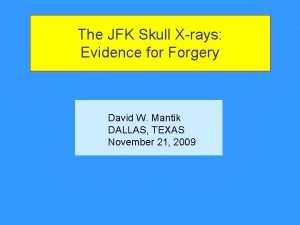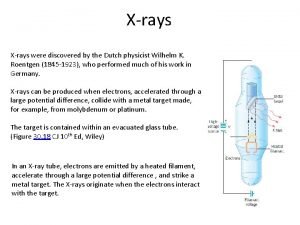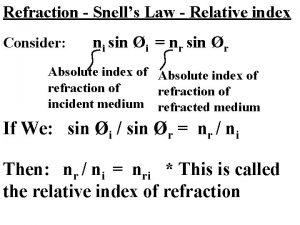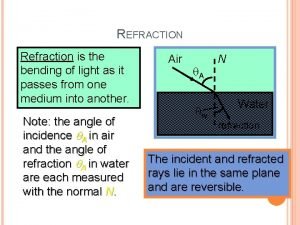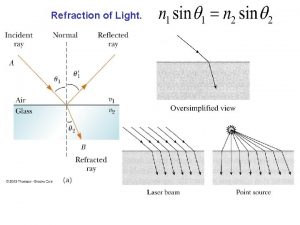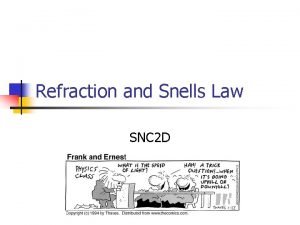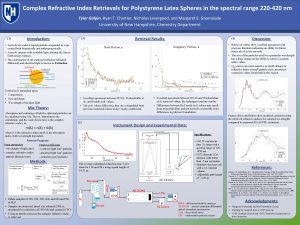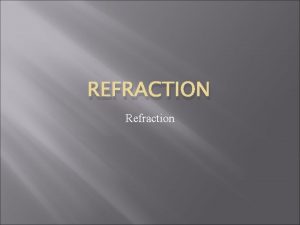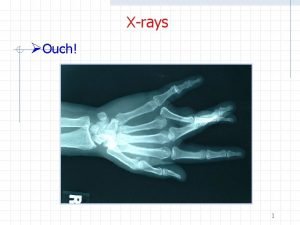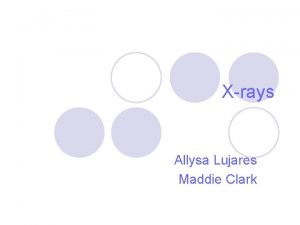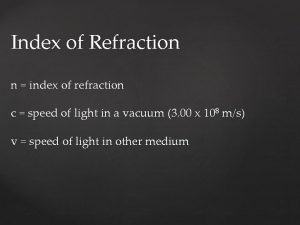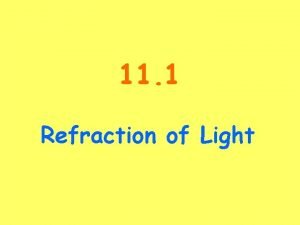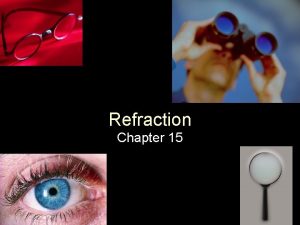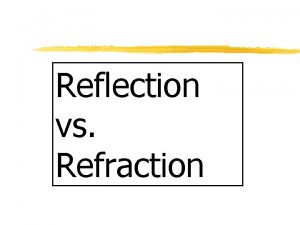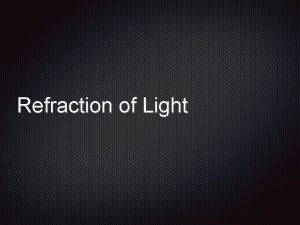Refraction of Xrays Index of refraction and electron









- Slides: 9

Refraction of X-rays Index of refraction and electron density Classical electron radius Snell’s law Total external reflection Shift of the diffraction maxima (at very small diffraction angles) Modified Bragg equation 1

Refraction of X-rays Total external reflection Evanescent wave / surface wave Shift of the diffraction maxima 2

Dynamical theory of diffraction Required for high diffracted intensities (> 1% of I 0) In the low angle region (in the vicinity of the primary beam) X-ray reflectivity X-ray diffraction by large, perfect single crystals 3

Dynamical theory of diffraction Multiple scattering of electromagnetic waves in large, perfect single crystals 4

Dynamical theory of diffraction Important results of the Darwin theory Maximum of the reflected intensity is equal to the intensity of the primary beam The width of the reflections depends on the structure factor The integral intensity is directly proportional to the structure factor Kinematical diffraction theory 5

Primary extinction Decrease of intensity in large crystallites Reasons: Ø Multiple diffraction Ø Negative interference of electromagnetic wave 6

Primary extinction The effect depends on: Ø The size of the coherent blocks (crystals) Ø The structure factor Consequences: Ø Decrease of the diffracted intensity as compared with the kinematically diffracted intensity W. H. Zachariasen, Acta Cryst. 23 (1967) 558. Spherical domains r – radius of the domains, F – structure factor K – polarization, l – wavelength Ve – volume of the unit cell 7

Secondary extinction Decrease of the intensity diffracted by small but only slightly misoriented crystallites Reasons: Ø Multiple scattering (and destructive interference) of the electromagnetic wave in adjacent crystallites Consequence: Ø Decrease of the diffracted intensity as compared to kinematic diffraction theory 8

Secondary extinction Correction: Ø Via a change of the linear absorption coefficient, which depends on the structure factor (= is now dependent on the diffraction indices) typical example: Ø Gaussian misorientation of crystallites Change of the absorption coefficient W. H. Zachariasen, Acta Cryst. 23 (1967) 558. 9


